Learn why cast iron rusts and how to prevent it. Discover the science behind rust, cleaning tips, and proven ways to keep your cast iron cookware rust-free.
Introduction: The Timeless Value of Cast Iron and Its One Weakness
Cast iron cookware has been cherished for generations due to its unmatched heat retention, durability, and ability to develop a natural non-stick surface. Whether you’re searing steaks or baking cornbread, few materials perform like cast iron. But despite its strength, it has one major vulnerability: rust.
If you’ve ever seen your skillet turn orange or spotted flaky rust after a wash, you’re not alone. Even the most seasoned cast iron can rust without proper care. In this comprehensive guide, we’ll uncover why cast iron rusts, the science behind it, and exactly how to prevent and reverse it.
What Is Rust and How Does It Affect Cast Iron?
The Science of Rust: Iron + Oxygen + Water
Rust, or iron oxide (Fe2O3), forms when iron reacts with oxygen and water. This is a natural process called oxidation. Cast iron, being composed almost entirely of iron, is highly susceptible.
In short:
Iron (Fe) + Water (H₂O) + Oxygen (O₂) = Rust (Fe₂O₃)
Surface vs Deep Rust: What’s the Difference?
- Surface Rust: Appears as orange or reddish-brown spots or dust. Often cosmetic and removable.
- Deep Rust: Involves pitting or flaking. This indicates prolonged neglect and may require restoration or replacement.
Why Cast Iron Rusts So Easily
Porous Structure and Moisture Retention
Cast iron is not smooth. On a microscopic level, it’s porous and riddled with tiny holes that trap moisture. Even after towel drying, residual moisture can remain and initiate rust.
Lack of Protective Coating Without Seasoning
Unlike stainless steel, cast iron has no built-in corrosion resistance. It relies on a seasoned layer (polymerized oil) to act as a barrier between iron and air/moisture.
Without this, raw cast iron rusts rapidly—sometimes within hours.
Environmental Factors (Humidity, Salt Air)
- High humidity introduces more moisture into the air.
- Salt air (especially near coastal regions) accelerates corrosion.
- Kitchens without good airflow or climate control can be breeding grounds for rust.
Cooking and Cleaning Mistakes That Promote Rust
- Leaving pans wet or soaking them in water
- Using dishwashers
- Not drying thoroughly after cleaning
- Using acidic foods that break down seasoning
Common Scenarios Where Cast Iron Develops Rust
Air-Drying After Washing
Letting your skillet air dry is a top cause of rust. Water droplets stay trapped in the iron’s pores and lead to oxidation.
Leaving Acidic Food Residue
Foods like tomatoes, vinegar, or citrus can degrade seasoning if left in the pan. If your seasoning is thin, these acids can expose the iron beneath.
Storing in Damp Cabinets or with Lids On
Closed cabinets without ventilation, or storing your pan with the lid on, trap humidity—an ideal condition for rust to thrive.
Neglect and Long-Term Disuse
Even well-seasoned pans can rust if left unused in poor storage conditions for months or years. Dust, air, and moisture work together slowly but surely.
Signs of Rust on Cast Iron: What to Look For
Early Rust Spots and Discoloration
You might notice:
- Small orange or brown patches
- Uneven dark spots where seasoning has worn
Orange Dust, Flakes, or Texture Changes
More advanced rust will leave a powdery residue or flaking. The texture becomes gritty or scaly to the touch.
Rust Stains on Other Items (Cross-Contamination)
Rusty cast iron can transfer rust particles to:
- Countertops
- Towels
- Storage racks
The Role of Seasoning in Rust Prevention
How Seasoning Forms a Protective Barrier
When cast iron is coated with oil and heated, it undergoes polymerization, forming a plastic-like layer that protects the metal from air and water.
What Happens When Seasoning Breaks Down
Scrubbing with soap, using metal utensils, or high-acid foods can strip seasoning, leaving parts of the iron vulnerable to rust.
How Often Should You Re-season?
It depends on usage:
- Frequent use: Light maintenance every few weeks
- Infrequent use: Full re-seasoning every few months
Environmental Triggers That Accelerate Rust
Coastal Environments and Salt Air
Salt speeds up rust formation by increasing water’s ability to conduct electricity—accelerating oxidation.
Seasonal Humidity Swings
Regions with damp winters or humid summers create rust-prone conditions. Even indoor pans can rust in closets or under sinks.
Improper Kitchen Storage Conditions
Avoid:
- Basements
- Near dishwashers or sinks
- Plastic bags or airtight containers (trap moisture)
Best Practices to Prevent Cast Iron Rust
Cleaning and Drying Techniques
- Use hot water and a stiff brush or chainmail scrubber
- Avoid soap unless restoring the pan
- Dry with a towel, then heat briefly on the stove
Proper Oil Application and Seasoning Cycles
- After each use, apply a light layer of oil
- Buff until barely visible
- Periodically bake at 450–500°F for 1 hour to reinforce
Storage Tips for Different Climates
- In humid areas, store with a paper towel inside
- Keep lids off or prop them open
- Consider hanging pans to allow air circulation
How to Reverse Early Rust Before It Spreads
Light Rust Removal with Scrubbing or Baking Soda
- Use steel wool or coarse salt to scrub
- Apply baking soda paste for mild cases
- Rinse, dry, and re-season
When to Use Vinegar or Electrolysis
- Vinegar soak (1:1 with water) for stubborn rust
- Electrolysis (advanced) for antique or heavily rusted pans
- Always neutralize vinegar with baking soda afterward
Rebuilding the Seasoning Layer
After rust removal:
- Dry thoroughly
- Apply high-smoke-point oil
- Bake for 1 hour at 500°F
- Repeat 2–3 times for durability
Myths About Cast Iron Rusting
Myth: Soap Causes Rust Instantly
Modern soaps are mild and won’t harm a well-seasoned pan. The real risk is not drying afterward.
Myth: A Little Rust Means You Must Throw It Away
Even severe rust can be fully removed. Cast iron is almost always restorable.
Myth: Cast Iron Is Maintenance-Free
Wrong. Cast iron requires regular care, seasoning, and correct cleaning to stay rust-free.
Professional Advice from Chefs and Experts
How Professionals Maintain Rust-Free Cast Iron
- Wipe clean, dry, and lightly oil after each use
- Never soak or put in the dishwasher
- Use cast iron regularly—frequent use keeps it in top shape
When They Replace vs Restore
Most chefs prefer restoring unless the pan is:
- Cracked
- Warped
- Severely pitted beyond repair
Cast Iron vs Other Cookware: Susceptibility to Rust
Stainless Steel
- Contains chromium, which resists rust
- Doesn’t require seasoning
Carbon Steel
- Similar to cast iron in maintenance and rust risk
- Lighter, quicker to season, but also rusts easily
Enameled Cast Iron
- Coated with a ceramic layer
- Won’t rust unless the enamel is chipped
FAQs About Why Cast Iron Rusts
Q1: Is rust on cast iron dangerous?
No, it’s not toxic, but you should remove it before cooking.
Q2: Can cast iron rust overnight?
Yes. Even a few hours of moisture can start rust formation.
Q3: How do I prevent rust when storing cast iron long-term?
Lightly oil the surface and store in a dry, ventilated place.
Q4: Why does cast iron rust even if I don’t use it?
Humidity and air exposure degrade seasoning over time.
Q5: Can I cook on cast iron with a little rust?
It’s not ideal. Always clean and reseason first.
Conclusion: Mastering the Art of Rust-Free Cast Iron Care
Now that you understand why cast iron rusts, you can prevent it confidently with the right care. From the science of oxidation to seasoning techniques and environmental control, cast iron maintenance is a manageable, rewarding skill.
With these tools, your cast iron cookware can last for generations, delivering incredible meals and adding timeless value to your kitchen.
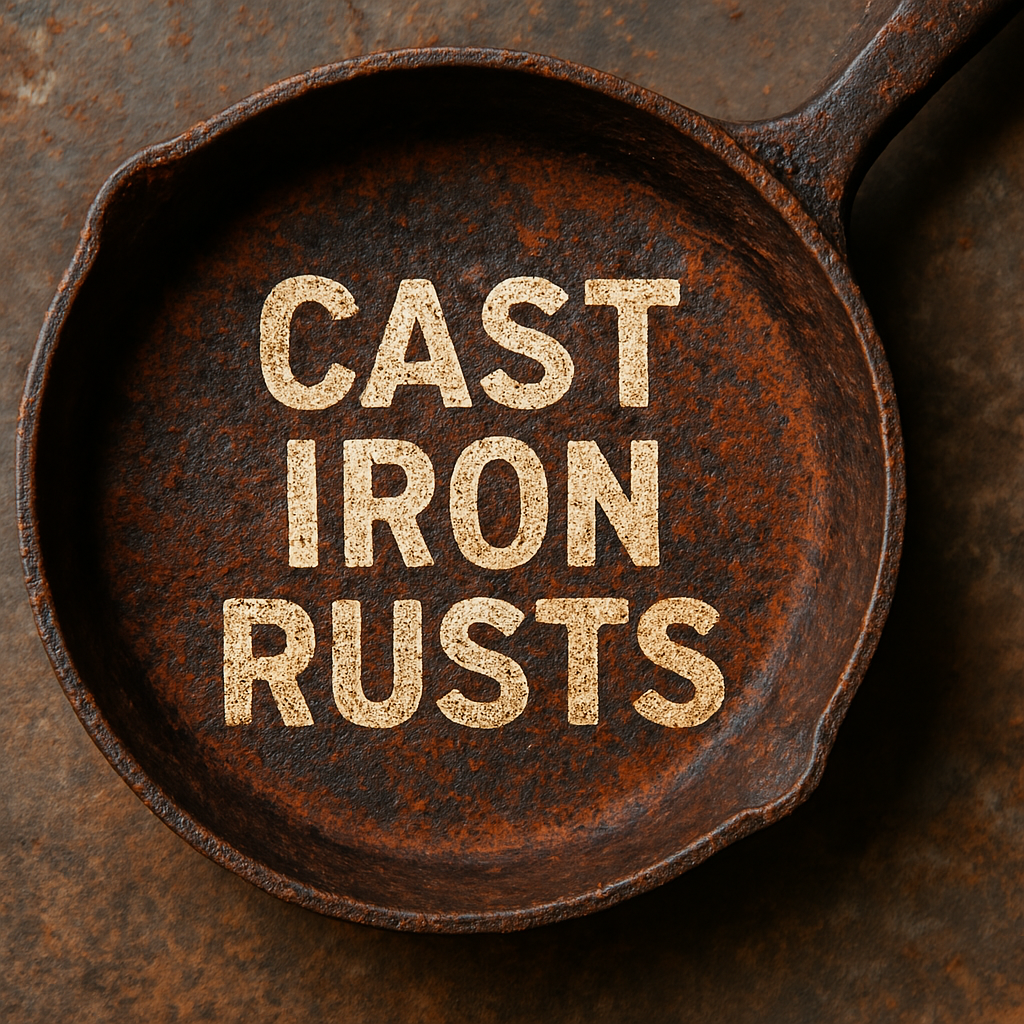

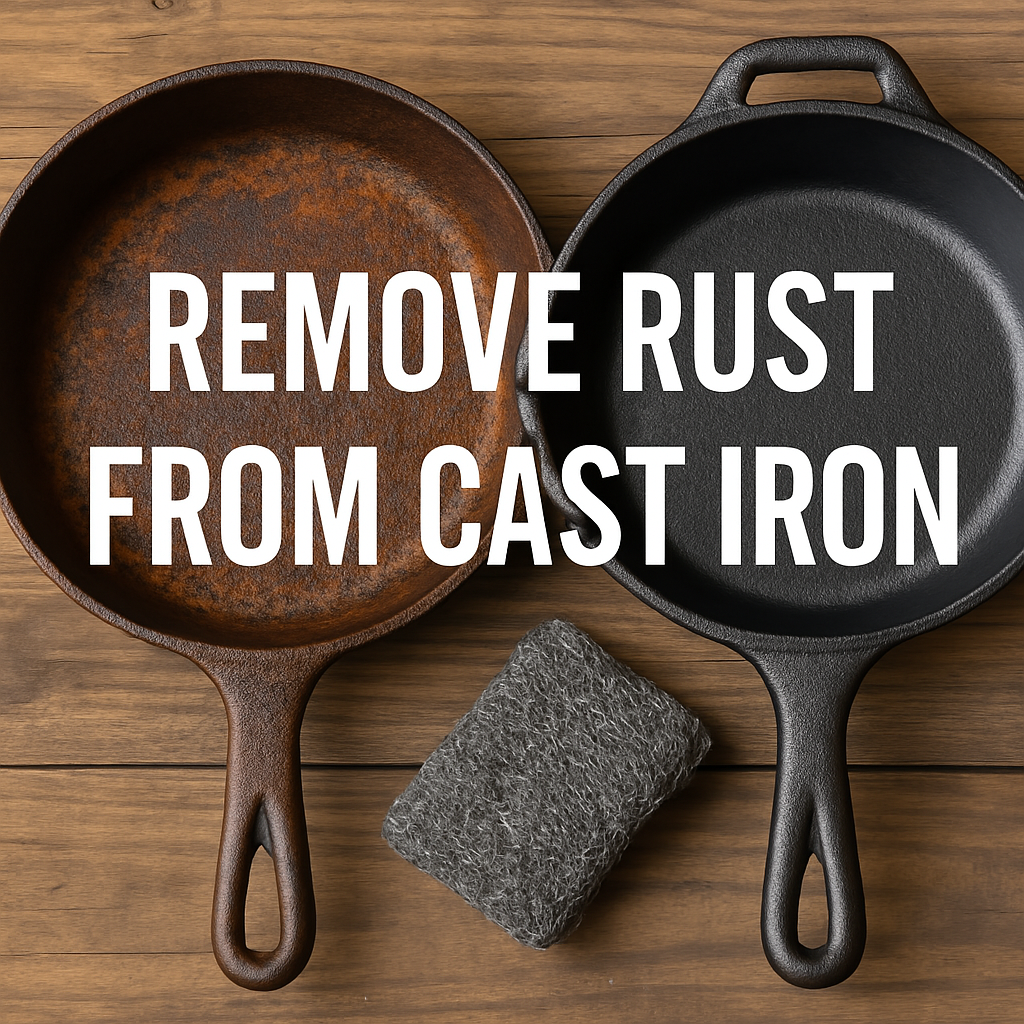
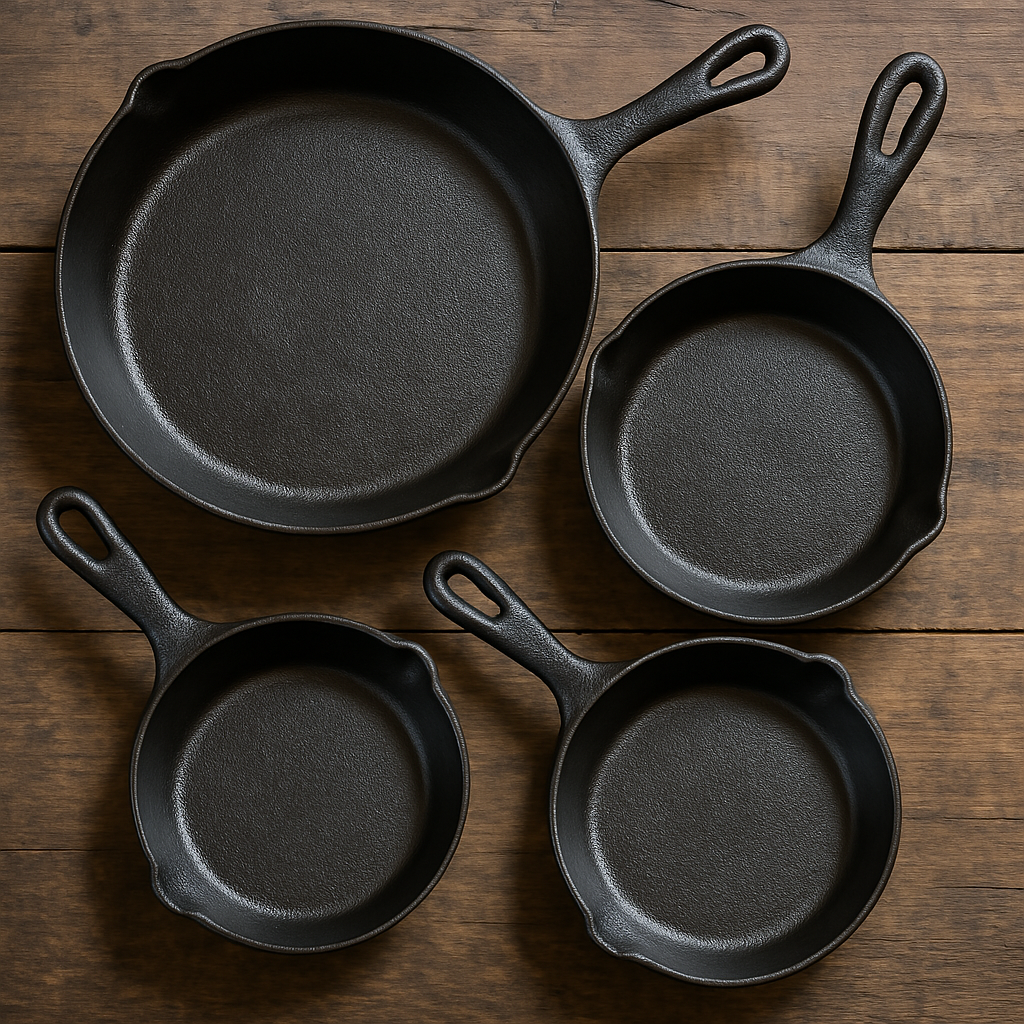
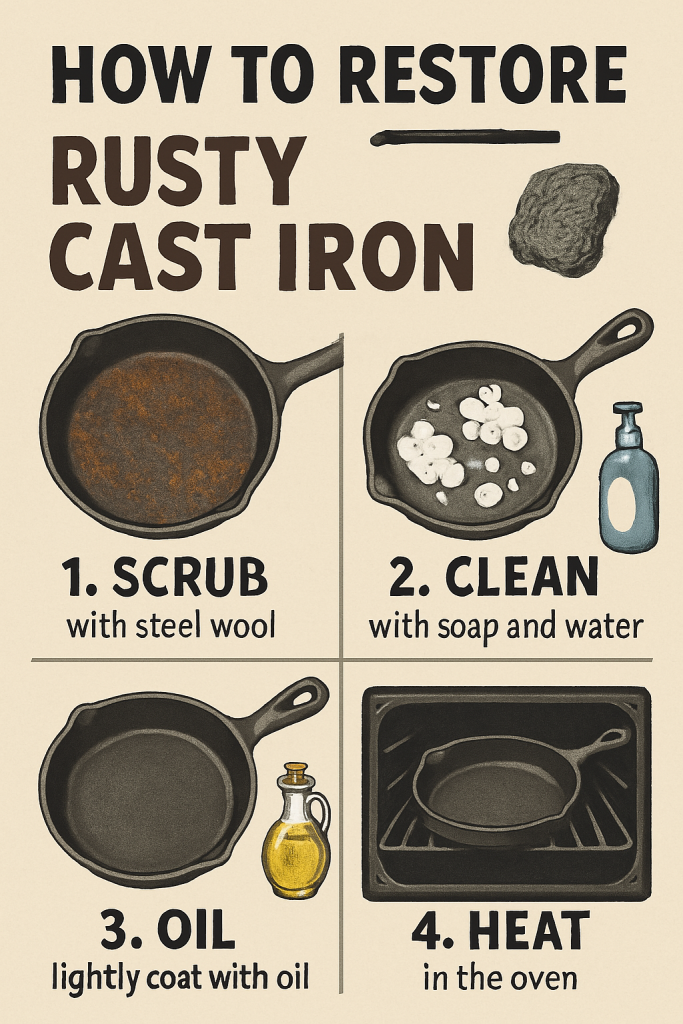
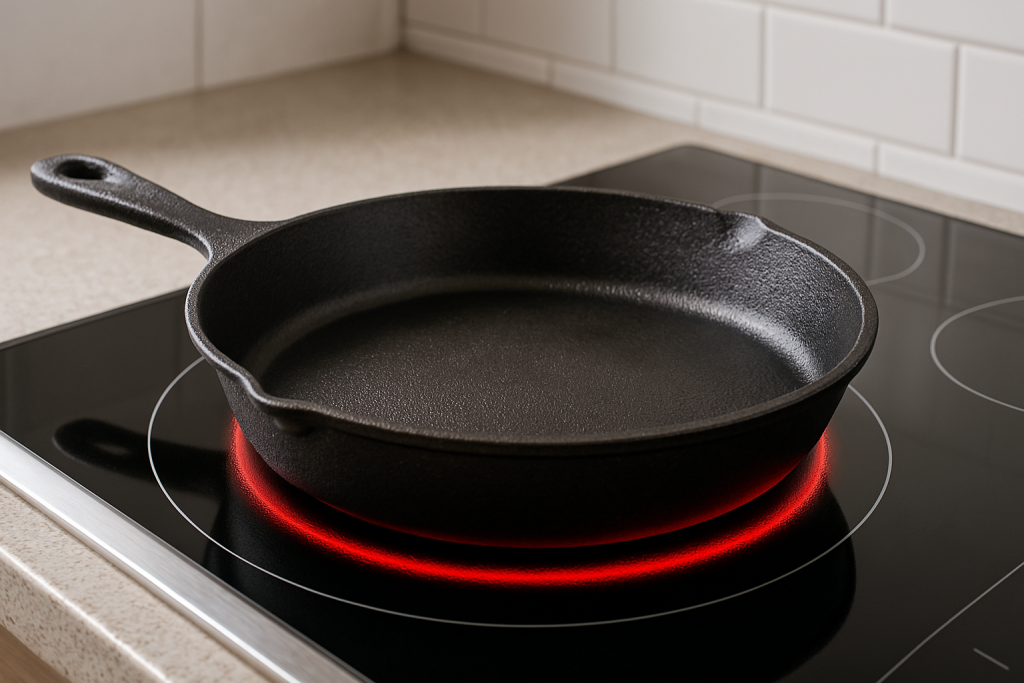
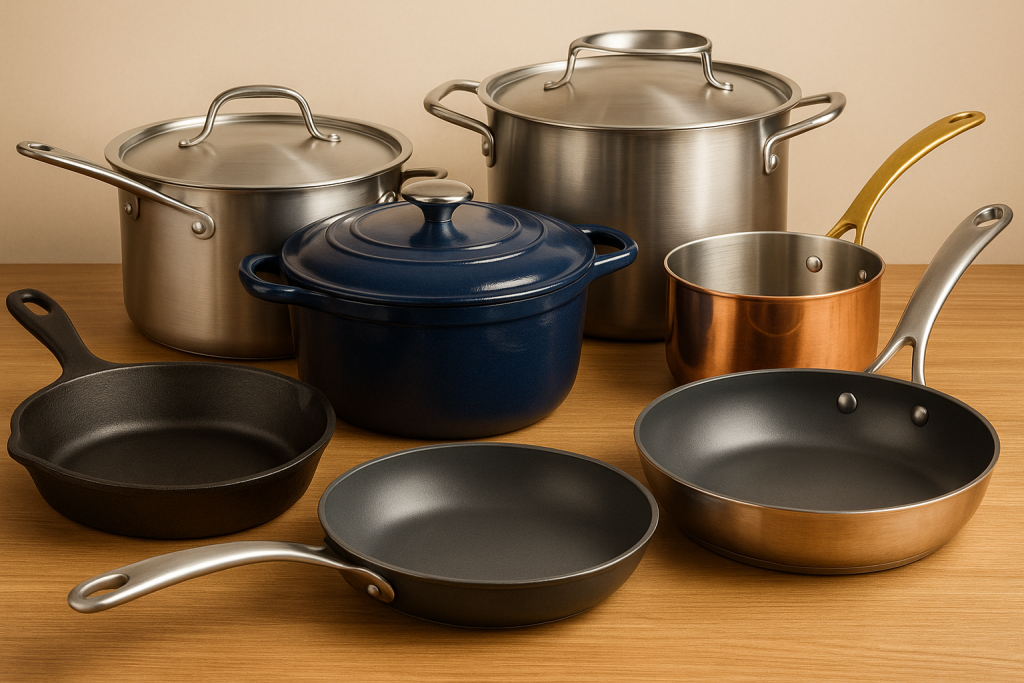
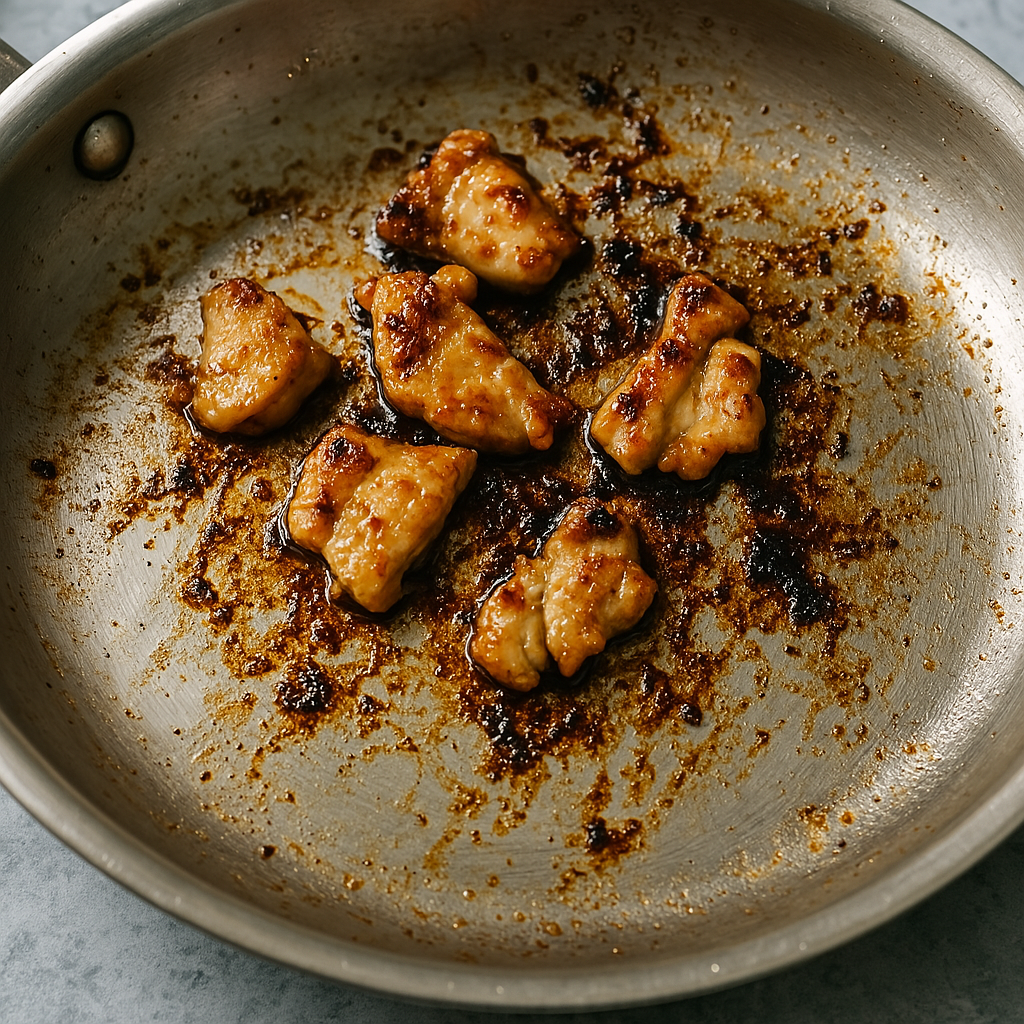
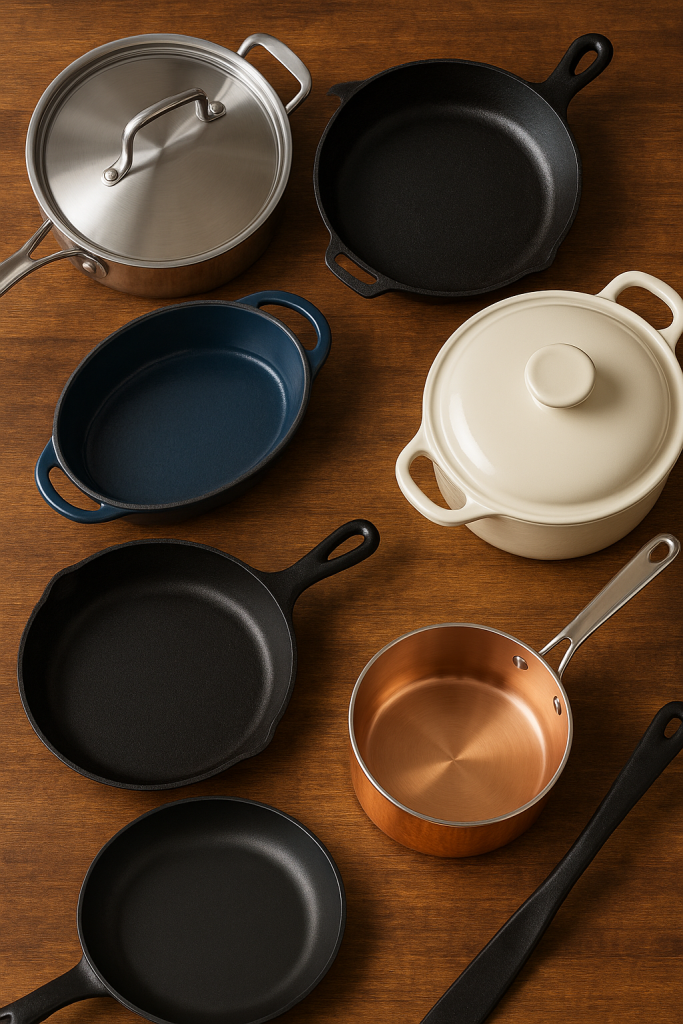
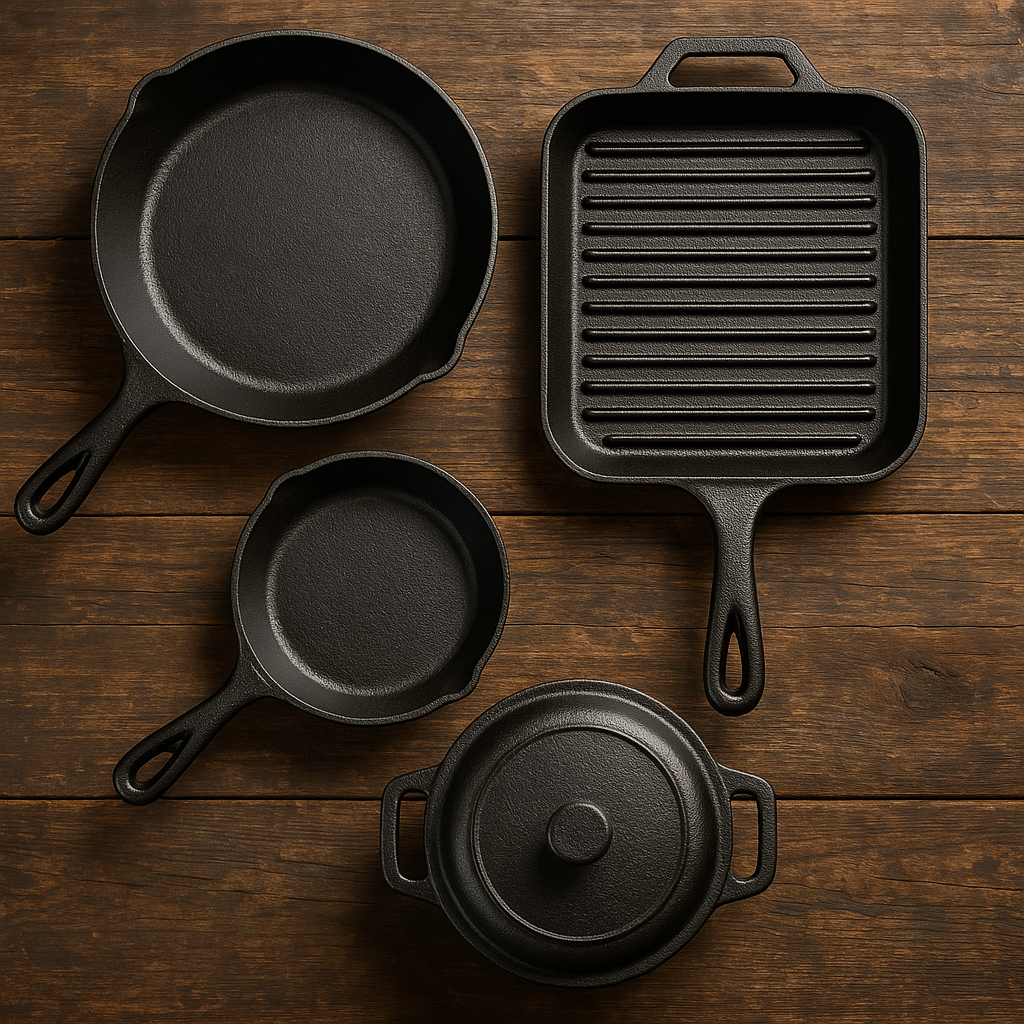
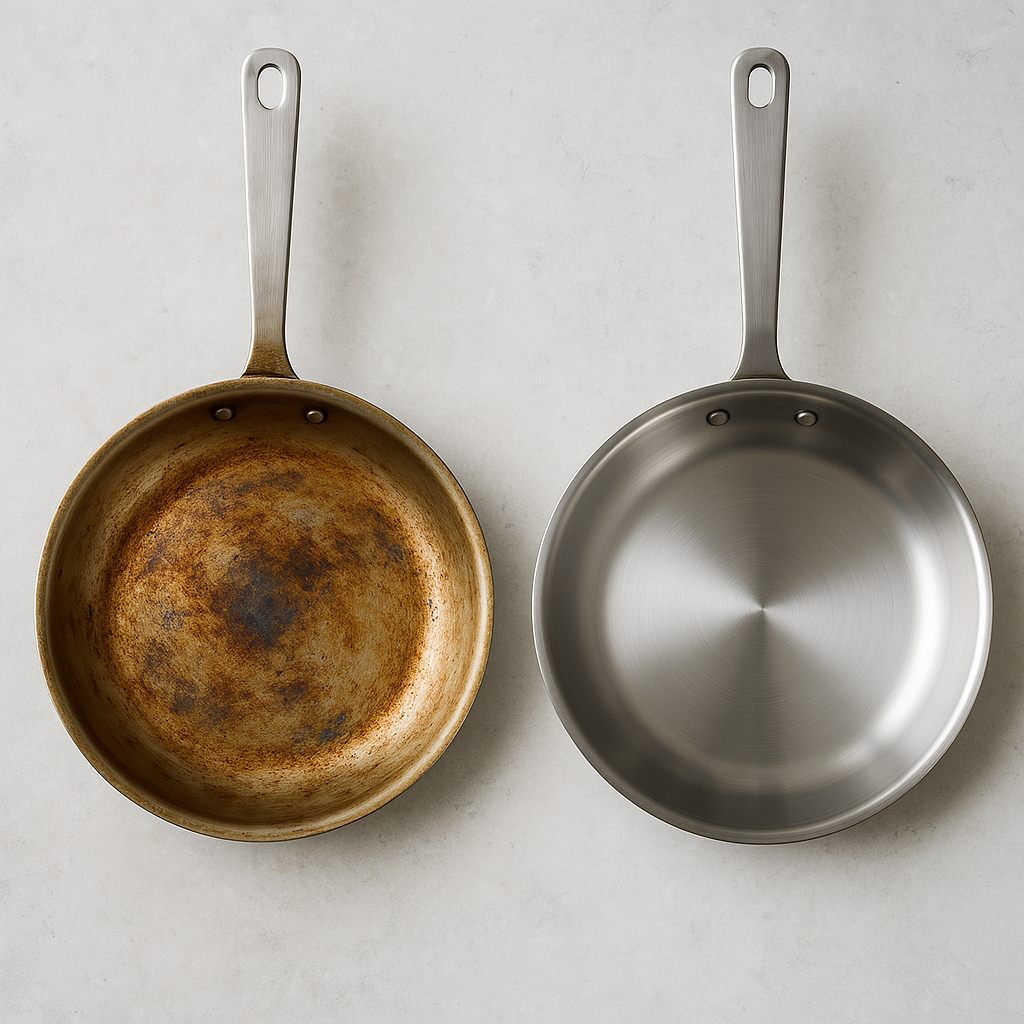
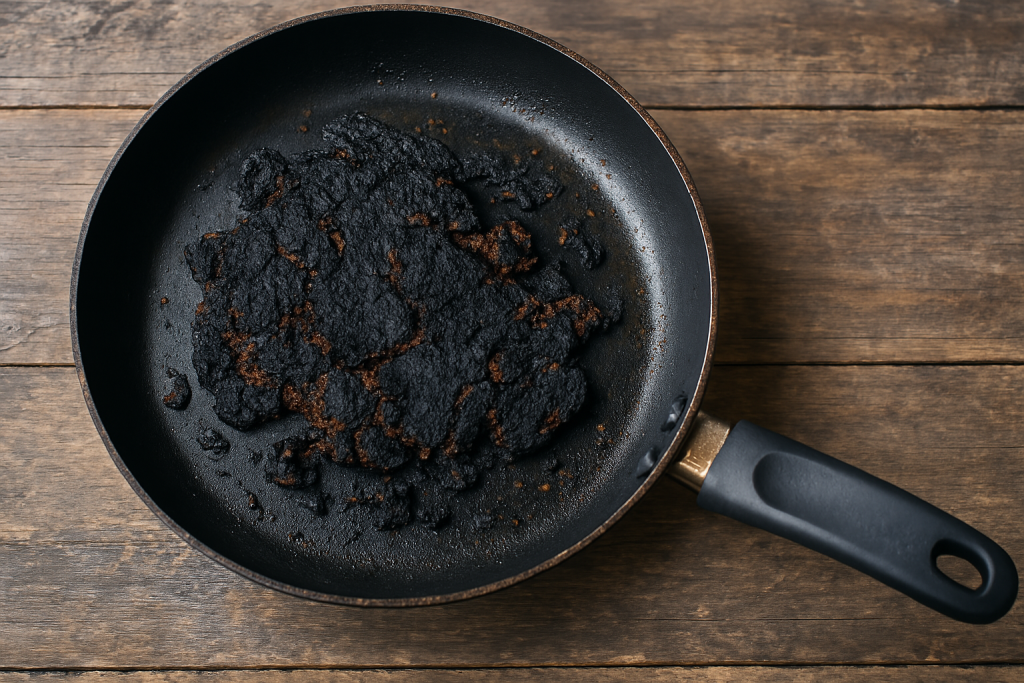
Leave a Reply